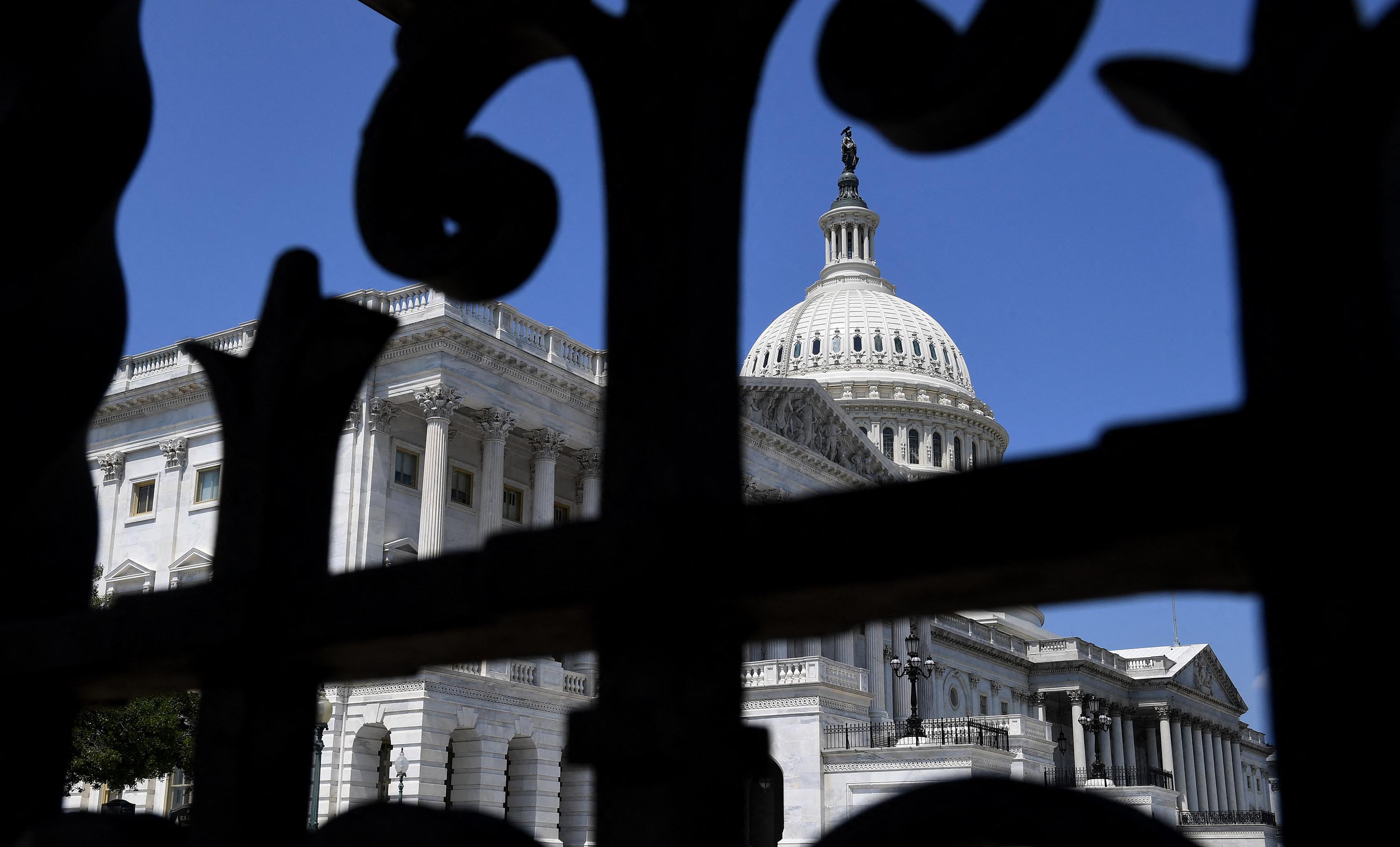
Here are some key Census results

What today’s Census data could mean for the redistricting process — and the 2022 midterm elections
From CNN’s Eric Bradner
The Census Bureau on Thursday released the data used to draw congressional and state legislative district lines, starting a nationwide scramble to draw new boundaries in time for next year’s midterm elections.
The data, based on last year’s once-a-decade canvassing, showed that population growth in the United States over the past decade has slowed, as 52% of counties have smaller populations in 2020 than they did in 2010. Instead, almost all of the nation’s population growth was in its cities, the data showed, a trend sure to highlight the urban-rural divide already prominent in American politics.
“Metro areas are even more prominent this decade as the locations of population growth amidst otherwise widespread population decline,” said Marc Perry, senior demographer of the US Census Bureau population Division, at a Census Bureau news conference Thursday.
What this could mean: The declining rural population and increasing concentration of Americans in cities could in some places provide favorable conditions for Democrats — whose voters are more urban than Republicans’ rural base — as states begin their processes of drawing new legislative boundaries.
Rural congressional districts that have for the last decade favored Republicans were more likely to see their populations shrink, which means that new versions of those districts would in some cases need to incorporate more voters from urban, Democratic-friendly areas.
However, it won’t be clear how the new data will shape the 2022 midterm elections until states complete their new maps in the weeks and months ahead. The data is coming more than four months later than usual — after some states’ deadlines to have new maps in place have already passed.
“What we’re expecting with the delay is that a number of states are going to run into issues with deadlines that they have for the redistricting process,” said Adam Podowitz-Thomas, the senior legal strategist for the Princeton Gerrymandering Project and the Princeton Electoral Innovation Lab, ahead of Thursday’s data release.
Some states have constitutional or statutory deadlines — set in anticipation that the Census Bureau would deliver the necessary data on time — that are imminent or in some cases have already been missed.
Read more about today’s data here.
There are now 7 states and territories where the non-Hispanic White share of the population is below 50%
2020 Census data showed that non-Hispanic White Americans continue to be the most prevalent group in every state, except for in California, Hawaii and New Mexico, as well as in the District of Columbia and Puerto Rico.
There are now seven states and territories where the non-Hispanic White share of the population is below 50%:
- California
- New Mexico
- Nevada
- Texas
- Maryland
- Hawaii
- Puerto Rico
In California, the Hispanic or Latino population officially became the largest racial or ethnic group in the state for the first time. The Hispanic or Latino community now represents 39.4% of Californians, an increase from 37.6% in 2010.
Here’s a look at how the White population changed these past 10 years:
Some more context: The Census retooled their survey for 2020 to ask American residents more detailed questions about how they identify their race and ethnicity. The Census Bureau reported that these and other technical changes “enable a more thorough and accurate depiction of how people self identify.”
The Census Bureau said comparisons on race and ethnicity between 2010 and 2020 should be “made with caution,” though they are “confident that the changes we are seeing from 2010 to 2020 in the diversity measures … likely reflect actual demographic changes in the population over the past 10 years, as well as improvements to the question designs, data processing and coding.”
From CNN’s By Janie Boschma, Daniel Wolfe, Meghna Maharishi, Priya Krishnakumar, Christopher Hickey and David Wright.
Here are some key Census results that show how much the US racial and ethnic composition has changed
From CNN’s Janie Boschma and Liz Stark

The Census Bureau’s local-level results provided a snapshot of how much the racial and ethnic makeup of the population has shifted since 2010.
According to new 2020 Census data released on Thursday, America is more diverse and more multiracial than ever before.
“Our analysis of the 2020 Census results show that the US population is much more multiracial, and more racially and ethnically diverse than what we measured in the past,” said Nicholas Jones, the director and senior adviser of race and ethnic research and outreach in the US Census Bureau’s population division.
Non-Hispanic White Americans continue to be the most prevalent group in every state, except for in California, Hawaii and New Mexico, as well as in the District of Columbia and Puerto Rico.
In California, the Hispanic or Latino population officially became the largest racial or ethnic group in the state for the first time. The Hispanic or Latino community now represents 39.4% of Californians, an increase from 37.6% in 2010.
The Census retooled their survey for 2020 to ask American residents more detailed questions about how they identify their race and ethnicity. The Census Bureau reported that these and other technical changes “enable a more thorough and accurate depiction of how people self-identify.”
The Census Bureau said comparisons on race and ethnicity between 2010 and 2020 should be “made with caution,” though they are “confident that the changes we are seeing from 2010 to 2020 in the diversity measures … likely reflect actual demographic changes in the population over the past 10 years, as well as improvements to the question designs, data processing and coding.”
Here are some other key findings from the data, according to the Census:
- The White population remained the largest race or ethnicity group in the United States, “with 204.3 million people identifying as White alone.” Overall, 235.4 million people reported White alone or in combination with another group. However, the data showed that the “White alone” population decreased by 8.6% since 2010.
- The “Two or More Races population” (also referred to as the multiracial population) changed considerably this past decade. The multiracial population was “measured at 9 million people in 2010 and is now 33.8 million people in 2020, a 276% increase.”
- Meanwhile, the Hispanic or Latino population, which includes people of any race, “was 62.1 million in 2020.” It grew 23%, while the population that was not of Hispanic or Latino origin grew 4.3% since 2010, the Census said.
The Census noted that the 2020 Census used the “required two separate questions (one for Hispanic or Latino origin and one for race)” to collect the races and ethnicities of the US population.
Remember: In Census Bureau statistics, race and ethnicity are two separate measures. Ethnicity is reported in two categories — as being of Hispanic or Latino origin or not – while race is categorized in one of six broad categories —White, Black or African-American, American Indian or Alaska Native, Asian, Native Hawaiian or Pacific Islander, and some other race. People taking the Decennial Census are able to indicate multiple races, but they will only be coded as having one response for ethnicity.
Florida’s The Villages was the fastest-growing US metro area from 2010-2020, Census says
From CNN’s Adrienne Vogt

The fastest-growing US metro area between the 2010 Census and 2020 Census was The Villages in Florida, which grew 39% from about 93,000 people to about 130,000 people.
The sprawling retirement community, which requires at least one household resident to be age 55 or older, is located in central Florida.
In 2014, data released from the Census Bureau showed that the community added 5.2% to its population from July 2012 to July 2013, making it the fastest-growing community in the US, percentage-wise.
The Villages recently garnered attention after Florida Rep. Matt Gaetz and Georgia Rep. Marjorie Taylor Greene held an “America First” rally there in May. Residents told CNN they were “horrified” about his appearance and called it a “distraction tour.”
In June 2020, former President Trump retweeted a video he said was from The Villages, in which a man driving a golf cart with Trump campaign posters is seen chanting “white power.”
2020 Census data show overall US population growth slowed despite increase in city populations
From CNN’s David Wright, Janie Boschma and Christopher Hickey

US population growth slowed overall last decade, despite significant growth in large metro areas, new 2020 Census data presented Thursday show.
Almost all of the nation’s population growth was in its cities, according to the Census Bureau. More than half of all counties saw their population decline since 2010. Most of the growth was driven by the South and West, while the Midwest and Northeast trailed behind.
“Population growth this decade was almost entirely in metro areas,” said Marc Perry, a senior demographer at the US Census Bureau. “Texas is a good example of this, where parts of the Houston, San Antonio, Austin, Dallas Fort Worth, Midland and Odessa metro areas had population growth, whereas many of the state’s other counties had population declines.”
Cities have grown faster than the nation as a whole.
- Population in metro areas grew by 8.7% since 2010.
- The US population grew from roughly 308.7 million in 2010 to 331.4 million, a 7.35% increase.
That’s the slowest population growth since 1930-1940 — the decade of the Great Depression.
Perry also said that across the country, small counties bled population to large counties.
“Population decline is even more widespread this decade, with 52% of all counties having smaller populations in 2020 than in 2010,” Perry said. “Metro areas are even more prominent this decade as the locations of population growth amidst otherwise widespread population decline.”
Perry said that “most counties lost population between 2010 and 2020,” and “on average, smaller counties tended to lose population, and more populous counties tended to grow.”
“Population growth this decade was almost entirely in metro areas. Metro areas grew by 8.7%, and micro-areas grew by 0.8%. Population in territory not in a metro or micro area declined by 2.8%. All 10 of the country’s most populous cities grew this decade,” Perry said.
NOW: Census Bureau details US population growth
Census Bureau officials are holding a news conference on 2020 Census data that will be used to draw congressional and state legislative district lines.
Dr. Ron Jarmin, acting director of the Census Bureau, stressed the quality of the data remained despite challenges and delays due to the Covid-19 pandemic.
Officials started the news conference by recounting data released in April that showed that the total population of the United States has topped 331 million people, marking the country’s second slowest population growth rate in US history.
According to the Census Bureau, the results released today will “include the first demographic and housing data from the 2020 Census that allow us to see demographic and population changes around the nation.”
The data will be made up of:
- Housing unit counts
- Occupancy status for housing units (occupied or vacant)
- Population totals
- Population totals by race
- Population totals by race and Hispanic/Latino origin
- Voting-age population (age 18 and older) totals by race and Hispanic/Latino origin
- Population totals in group quarters by major group quarters type
Read more about today’s news conference here.
The Census Bureau is releasing new data soon that will shape the redistricting battle. Here’s what to know.
From CNN’s Eric Bradner

The Census Bureau is set to soon release the data used to draw congressional and state legislative district lines, beginning a nationwide scramble to draw new boundaries in time for next year’s midterm elections.
Here are key things to know:
- What the data will contain: The data — based on last year’s once-a-decade canvassing — is expected to show that population growth in the United States over the past decade has been driven entirely by minorities. It will detail on the neighborhood level how the racial makeup and voting-age populations have shifted over 10 years.
- Why it matters: In April, Census Bureau officials released data that showed which states would gain and lose seats. Texas is gaining two House seats, increasing its total to 38 — second only to California’s 52. The third-highest total is Florida, which will add a seat, increasing its House ranks to 28. North Carolina, Oregon, Colorado and Montana are also each gaining a House seat. Seven states each lost one seat: the traditional battlegrounds Michigan, Pennsylvania and Ohio and Democratic strongholds California, New York and Illinois, as well as West Virginia. Thursday’s release will provide the more detailed neighborhood-level data that legislatures and redistricting commissions need to draft maps with precise boundaries for congressional and state legislative districts.
- Data delays: Today’s data is coming more than four months later than usual — after some states’ deadlines to have new maps in place have already passed. “What we’re expecting with the delay is that a number of states are going to run into issues with deadlines that they have for the redistricting process,” said Adam Podowitz-Thomas, the senior legal strategist for the Princeton Gerrymandering Project and the Princeton Electoral Innovation Lab. The neighborhood-level data is typically released by April 1. Census officials have blamed the delay on the coronavirus pandemic, which hit the United States in early March of 2020 — a critical time for the census process. Then-President Donald Trump’s administration also fought to exclude noncitizens when splitting seats in Congress between the states.
Read more about today’s Census data here.
Census Bureau says data are “high quality” and “fit to use for redistricting” despite pandemic’s challenges
Despite challenges faced by the Covid-19 pandemic, Dr. Ron Jarmin, acting director of the Census Bureau, says in a July 28 blog post that the local-level results set to be released today “are high quality and are fit to use for redistricting.”
“Every way we’ve analyzed the 2020 Census — through our extensive reviews during data processing, by comparing the numbers to population benchmarks, and looking at the operations — the census data are high quality and are fit to use for redistricting. In fact, the quality of the 2020 Census data is quite remarkable amid all the challenges we faced last year,” Jarmin writes.
The acting director noted the pandemic “significantly delayed our schedule for collecting and processing the data for the 2020 Census” and he described how the pandemic’s impact may be reflected in the data.
“Our results also will likely show some effects from the current pandemic. For example, some people relocated, and based on the 2020 Census Residence Criteria and Residence Situations, they may have been counted in a different place than they would have lived otherwise,” he writes.
According to the Census Bureau, the data set to be released today will “include the first demographic and housing data from the 2020 Census that allow us to see demographic and population changes around the nation.”
The data will be made up of:
- Housing unit counts
- Occupancy status for housing units (occupied or vacant)
- Population totals
- Population totals by race
- Population totals by race and Hispanic/Latino origin
- Voting-age population (age 18 and older) totals by race and Hispanic/Latino origin
- Population totals in group quarters by major group quarters type
Some more context: Congressional districts are redrawn every 10 years, using the latest Census data — along with data points ranging from education levels, wealth and historic voting patterns — to draw congressional seats. In the majority of states, maps are redrawn and accepted by state legislatures, with many giving authority to the state’s governor to either approve or deny the new districts. Only a handful of states rely on relatively independent commissions to determine new maps.
CNN’s Dan Merica contributed reporting to this post.
You likely will hear the word “redistricting” a lot today. Here’s what it means.
From CNN’s Dan Merica
The Census Bureau is set to release data today from the 2020 Census on “race, Hispanic origin, and the voting-age population” that states use “to redraw the boundaries of their congressional and state legislative districts,” according to their website. This redrawing of districts is known as “redistricting.”
Congressional districts are redrawn every 10 years, using the latest Census data — along with data points ranging from education levels, wealth and historic voting patterns — to draw congressional seats. Republicans, because of their control of a majority of state legislatures, have been far more successful in drawing maps that favor their party.
Democrats have responded with a two-pronged approach with vastly different levels of success. First, operatives and lawyers have filed a number of successful lawsuits alleging that the other party is illegally engaging in gerrymandering, particularly along racial lines. Gerrymandering is when politicians manipulate voting district boundaries to favor one party over another. Secondly, Democrats have looked to turn the redistricting process into a political issue, committing more millions to try to win back state legislatures ahead of the redistricting process. Those efforts have been far less successful.
In the majority of states, maps are redrawn and accepted by state legislatures, with many giving authority to the state’s governor to either approve or deny the new districts. Only a handful of states, including Arizona, Colorado and Michigan, rely on relatively independent commissions to determine new maps.
For those tasked with redistricting, especially in states with some political control, the pressure to get these calculations right is immense, given that the process could determine control of the House of Representatives for years to come.
Adding pressure to these calculations are dramatic demographic shifts across the country, with states in the upper Midwest and northeast likely to lose seats in Congress, while states like Georgia, Texas, Florida and North Carolina are set to add seats because of growth largely fueled by minority voters.
Read more about the process here.
Source: http://rss.cnn.com/~r/rss/cnn_topstories/~3/tscbI9kADa0/census-2020-results-08-12-21


















